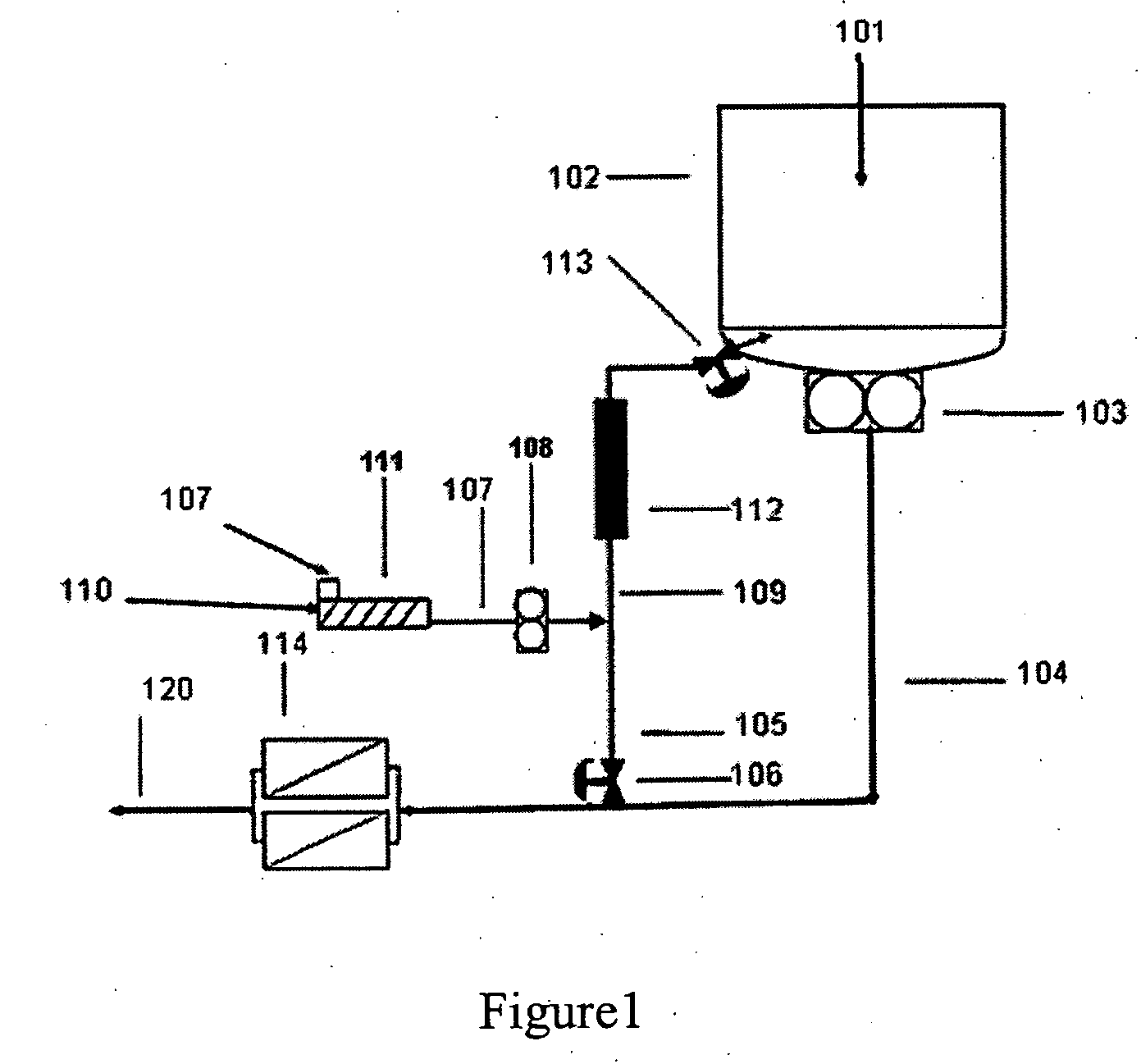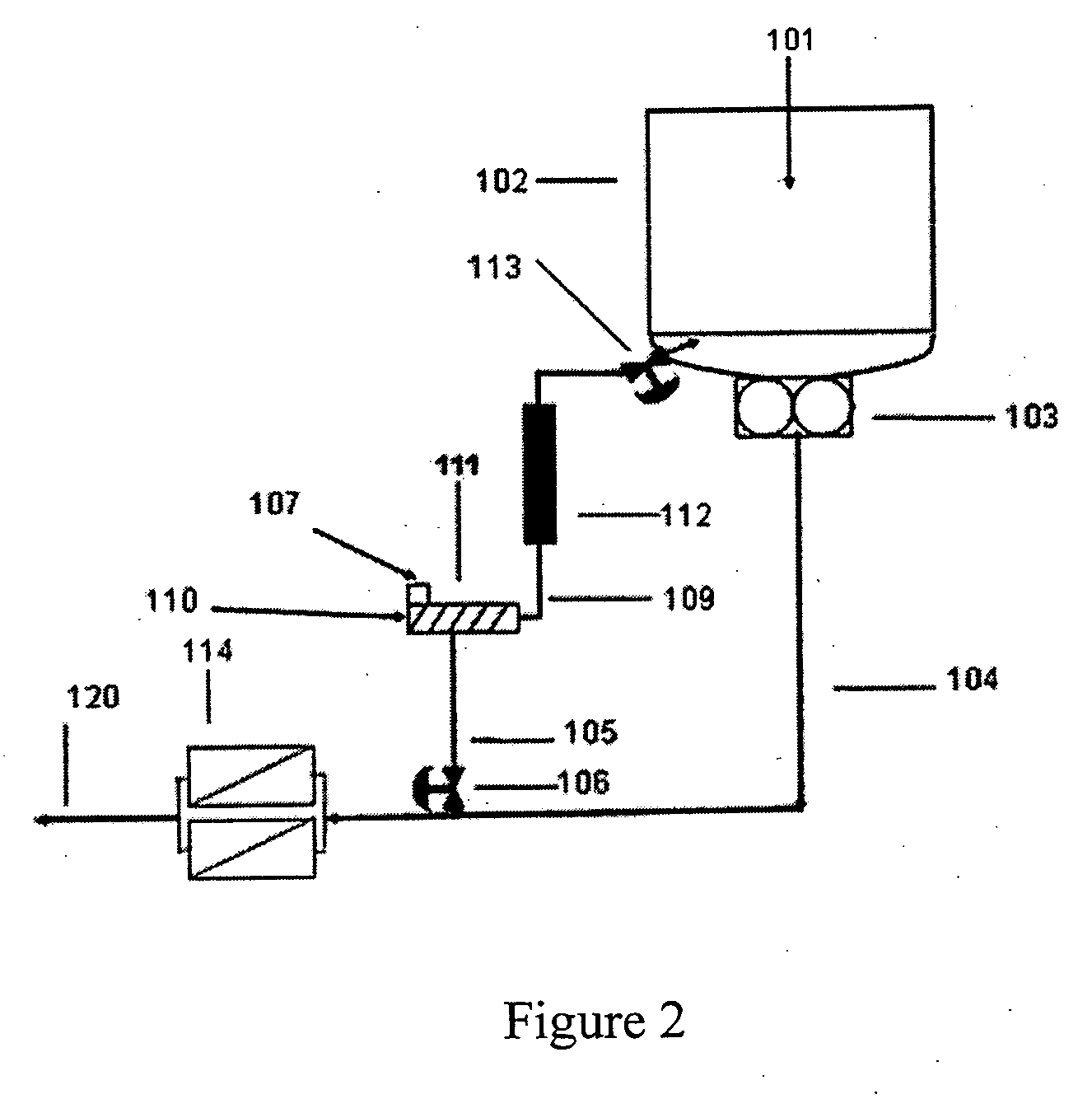Late addition to effect compositional modifications in condensation polymers
a condensation polymer and composition technology, applied in the field of preparation of modified polymers, can solve the problems of short production run, equipment ill-suited for small-scale production of a diverse family of modified thermoplastics, and limitations that must be minimized or eliminated, so as to reduce the volume of the produ
- Summary
- Abstract
- Description
- Claims
- Application Information
AI Technical Summary
Benefits of technology
Problems solved by technology
Method used
Image
Examples
Embodiment Construction
[0022] The present invention may be understood more readily by reference to the following detailed description and by reference to FIGS. 1-3 as an illustration of three embodiments, with other embodiments described herein in further detail.
[0023] Before the present processes are disclosed and described, it is to be understood that this invention is not limited to specific synthetic methods or to particular formulation, as such may, of course, vary. It is also to be understood that the terminology used herein is for the purpose of describing particular embodiments only and is not intended to be limiting.
[0024] It must also be noted that, as used in the specification and the appended claims, the singular forms “a,”“an” and “the” include plural referents unless the context clearly dictates otherwise. For example, reference to processing or making a “polymer”, a “preform”, “article”, “container”, or “bottle” is intended to include the processing or making of a plurality of polymers, p...
PUM
| Property | Measurement | Unit |
|---|---|---|
| melt temperature | aaaaa | aaaaa |
| temperature | aaaaa | aaaaa |
| temperature | aaaaa | aaaaa |
Abstract
Description
Claims
Application Information
 Login to View More
Login to View More - R&D
- Intellectual Property
- Life Sciences
- Materials
- Tech Scout
- Unparalleled Data Quality
- Higher Quality Content
- 60% Fewer Hallucinations
Browse by: Latest US Patents, China's latest patents, Technical Efficacy Thesaurus, Application Domain, Technology Topic, Popular Technical Reports.
© 2025 PatSnap. All rights reserved.Legal|Privacy policy|Modern Slavery Act Transparency Statement|Sitemap|About US| Contact US: help@patsnap.com



